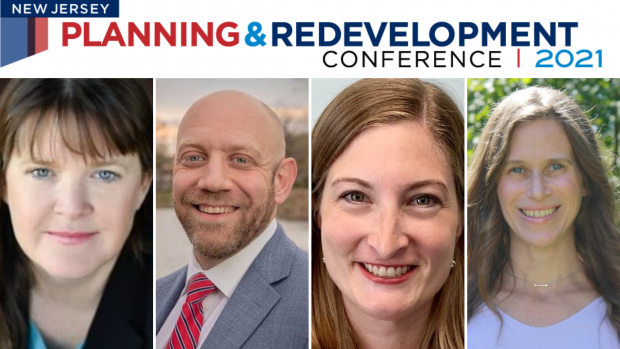New Jersey Future Blog
Creating Aging-Friendly Communities Through Municipal Actions and Partnerships
June 25th, 2021 by Bailey Lawrence

While responding to the unique needs of older adults, the cultivation of aging-friendly municipalities can also benefit community members across all age groups. At the Creating Aging-Friendly Communities Through Municipal Actions and Partnerships session at the 2021 New Jersey Planning and Redevelopment Conference, aging-friendly advocates and local officials expressed the importance of aging-friendly communities and described strategies for making municipalities more inclusive for older adults.
According to New Jersey Advocates for Aging Well Executive Director Cathy Rowe, in many New Jersey communities the number of retired people will “exceed the number of students in the school system” sometime after 2030. This is the case in South Orange, where local officials were motivated to respond to such demographic trends, as well as the concerns of older residents. These concerns are sometimes neglected, especially when local officials focus on attracting younger individuals and reinvigorating downtown areas, according to Borough of Pompton Lakes Council President Erik DeLine.
Nonetheless, all speakers at the session emphasized that the needs and interests of older adults and younger people are not mutually exclusive. In fact, according to AARP New Jersey Associate State Director, Advocacy Katie York, “like many facets of age-friendly work, improved built environments can benefit all ages.”
Similarly, New Jersey Future Community Planning Manager Tanya Rohrbach said that establishing aging-friendly communities “helps to create community-wide benefits, uses resources more efficiently, and fosters community building.”
Additionally, efforts to improve the built environment for all community members can produce significant benefits for older adults. According to DeLine, prior to making a conscious effort to become an aging-friendly community, Pompton Lakes had already worked to expand local grocery store access, increase green space, and establish walkable streets. While enhancing the general community’s livability, these initiatives also helped respond to the financial, health, and safety concerns of the municipality’s older adults.
“Some of the things you’re doing can be aging-friendly, even if you’re not explicitly thinking about it,” DeLine said.
Building aging-friendly communities is especially important, according to Rohrbach, because of the failures of “aging in place” to address home design, cost, maintenance, and social isolation. “Aging in community,” on the other hand, promotes social engagement, mobility, and physical and mental wellbeing, all of which can be experienced as a result of an optimized built environment. According to Rohrbach, the built environment’s potential benefits can be maximized by implementing compact development, constructing walkable street grids, and providing a diversity of housing options.
The achievements of South Orange and Pompton Lakes are reflective of an increasing statewide commitment to aging-friendly communities. New Jersey recently became the ninth state to join the AARP Network of Age-Friendly Communities and States.
All speakers at the session highlighted the impact of collaboration between local community groups and municipal governments. “Great places don’t make themselves or happen by chance. We have to be proactive, and a big part of that includes municipal action,” Rohrbach said. In November 2020, New Jersey Future (NJF) published Creating Great Places to Age in New Jersey: A Community Guide to Implementing Aging-Friendly Land Use Decisions in order to support the state’s municipalities in their efforts to foster aging-friendly communities.
NJF also conducted an aging-friendly land use assessment in Pompton Lakes, which helped the municipality identify the need for an amplified diversity of housing options, according to DeLine. DeLine said that, according to the municipality’s findings, more than half of its 65-and-older residents were cost-burdened. In order to more effectively engage in aging-friendly work, Pompton Lakes hired an aging-friendly coordinator. Furthermore, DeLine said that the municipality is seeking to amend its accessory dwelling unit ordinance in order to provide a greater array of affordable housing options.
Meanwhile, South Orange supported its aging-friendly work by developing a new master plan, which is the “most comprehensive and inclusive” New Jersey master plan to date, according to Rowe. Community engagement and participation, especially among older residents, were crucial throughout the process of establishing South Orange’s master plan. According to Rowe, the municipality held more than 46 separate engagement events (three of which were organized for older residents, specifically) and facilitated online engagement efforts.
“The best plans or the best policies really [mean] nothing if people don’t know about [them]. It was important for us to get the word out and keep people constantly informed,” Rowe said.
Related Posts
Tags: Aging-Friendly Communities, NJPRC21, Places to age, Planning and Redevelopment Conference
















